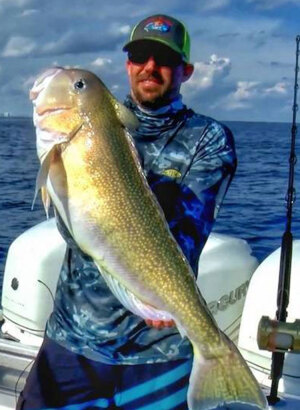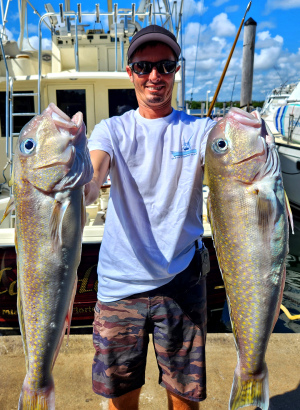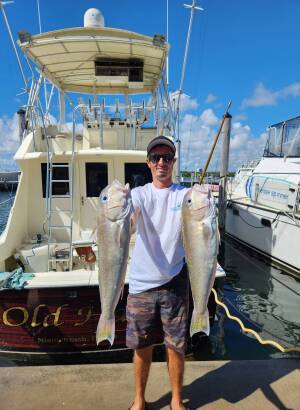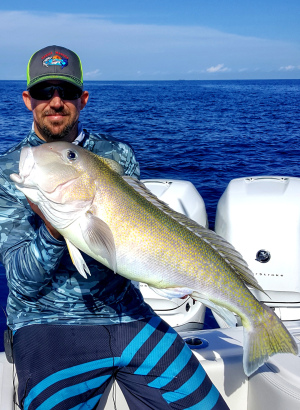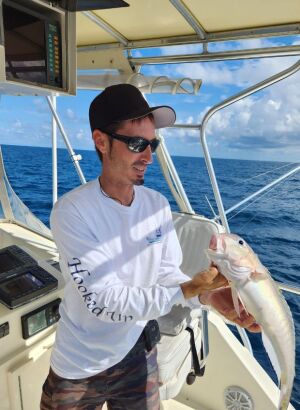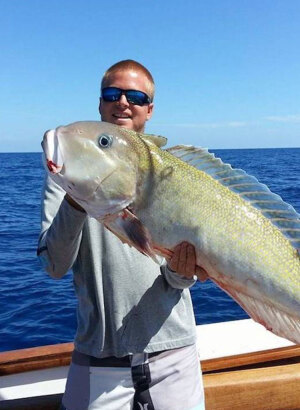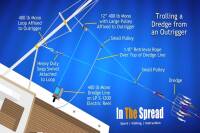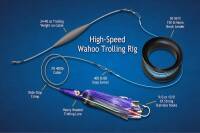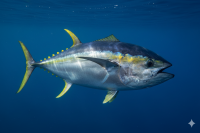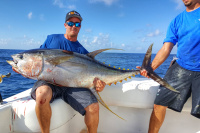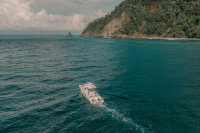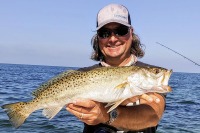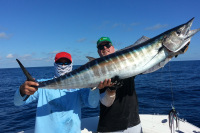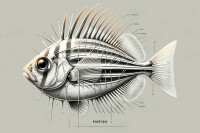Learn proven deep dropping methods, optimal bait selection, and drift fishing strategies that consistently produce limits of tilefish. Our comprehensive guide covers everything from rig construction to reading bottom conditions for successful offshore fishing adventures targeting these prized bottom dwellers.
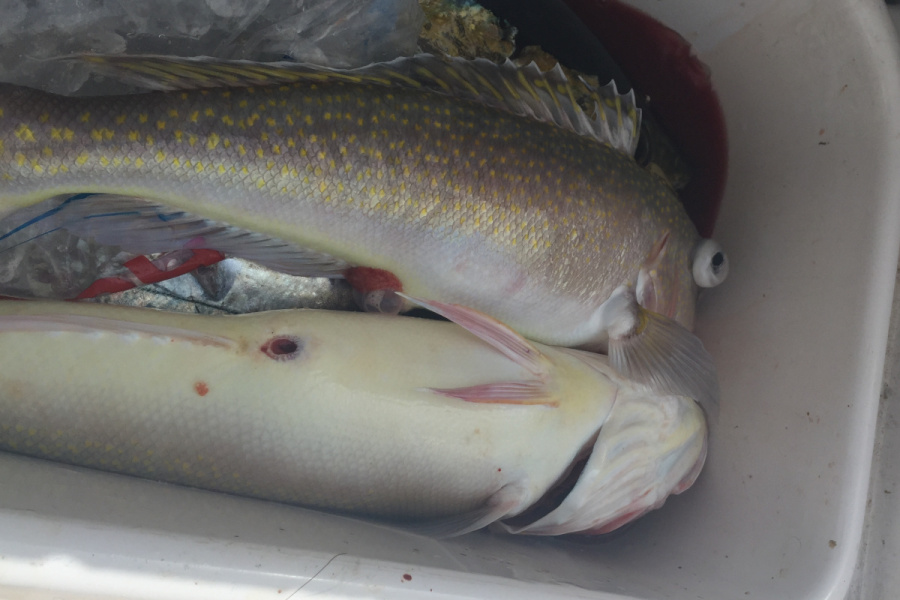
Tilefish Fishing Guide: How to Catch Poor Man's Lobster
Tilefish Fishing
When anglers discover tilefish, they quickly understand why this species earned the nickname "poor man's lobster." These iridescent beauties offer both incredible table fare and surprisingly accessible deep drop fishing opportunities. With their sweet, shellfish-like flavor and straightforward catching techniques, tilefish have become a favorite target for bottom fishing enthusiasts from the Northeast to the Gulf of Mexico.
Understanding Tilefish: Nature's Bottom-Dwelling Delicacy
Tilefish fishing targets one of the ocean's most colorful deep-water species. These remarkable fish display iridescent blue-green backs spotted with bright yellow and gold, white bellies, and rosy heads with distinctive blue markings under their eyes. The golden tilefish even sports a prominent crest on its head, giving it an almost regal appearance.
Why Tilefish Taste Like Lobster
- Primary prey: Lobsters, shrimp, crabs, and clams
- Secondary food sources: Sea urchins, other tilefish, and various shellfish
- Feeding behavior: Strong teeth allow them to crush shells easily
Tilefish Biology and Habitat
- Northern regions: March through November (peak in June)
- Southern Atlantic and Gulf: January through June (peak in May)
- Population resilience: High reproduction rates help maintain healthy stocks
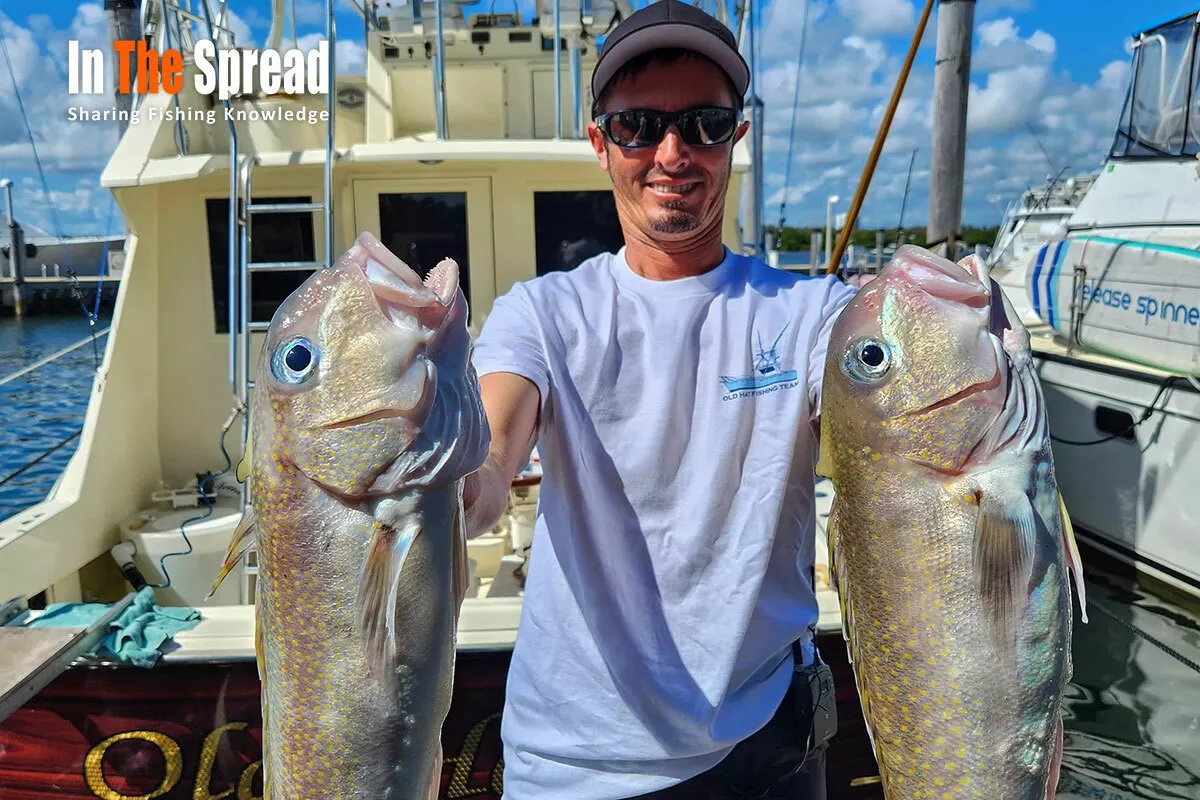
When and Where to Fish for Tilefish
Optimal Fishing Times
When to fish for tilefish follows a predictable pattern that smart anglers exploit. The prime bite window occurs during midday hours when the sun reaches its highest point.
- Peak hours: 10 AM to 3 PM consistently produces the most action
- Weather conditions: Sunny days dramatically outperform overcast conditions
- Feeding behavior: Midday feeding corresponds with their natural hunting patterns
Prime Tilefish Locations
- Depth range: 600-800 feet provides optimal conditions
- Bottom composition: Soft sand and mud allow for easy burrowing
- Geographic distribution: Northeast waters to Florida, throughout the Gulf of Mexico
- Distance considerations: Northern anglers may travel 90+ miles; South Florida boats reach productive waters in minutes
Deep Dropping Techniques for Tilefish Success
Why Deep Dropping Works
- Limited range: Tilefish rarely venture far from their burrows
- Curiosity response: Bottom disturbance triggers investigative behavior
- Snag-free environment: Soft bottom reduces tackle loss significantly
Basic Deep Dropping Method
- Bottom bouncing: Create vibrations by lifting and dropping your weight
- Constant contact: Keep feeling the bottom through your rod tip
- Drift management: Use engine adjustments to control speed over ground
- Patience: Allow time for fish to investigate your presentation
Reading the Bottom
- Soft mud signature: Broken, indistinct bottom readings
- Green coloration: Many depth finders show soft bottom in green tones
- Weight behavior: Lead that "sticks" then pops free indicates proper bottom
- Contour lines: Widely spaced lines on charts indicate flat, suitable areas
Best Baits and Rigs for Tilefish
Proven Tilefish Baits
- Squid: Available year-round and produces consistent results
- Oily fish: Bonito, mackerel, and barracuda work exceptionally well
- Fresh cuts: Two-inch chunks or whole small baitfish
- Bait security: Ensure hooks hold bait firmly against powerful jaws
Bait Presentation Tips
- Size matters: Use generous bait portions that won't easily tear off
- Hook security: Thread bait multiple times through tougher sections
- Scent trails: Fresh, bleeding bait creates attractive scent dispersal
- Multiple offerings: Vary bait types on different hooks of the same rig
Drift Fishing Strategies
Managing Current and Drift
- Weight selection: 5-8 pounds of lead handles strong Gulf Stream currents
- Stemming the tide: Drive into current to slow drift speed
- Line angle: Maintain vertical presentations for better bite detection
- Speed control: Adjust boat position to optimize bait exposure time
Covering Productive Water
- Chart study: Identify green mud zones using bathymetric charts
- Systematic drifting: Cover extensive areas methodically
- GPS marking: Record productive locations for future reference
- Multiple passes: Fish successful areas repeatedly as bigger fish often bite later
Reading Current Conditions
- Light current: Use boat positioning to create controlled drifts
- Strong current: Employ heavier weights and strategic boat handling
- Variable current: Adjust tactics as conditions change throughout the day
- No current: Create artificial drift using engine power for consistent presentations
Rig Construction Guide
Building Effective Tilefish Rigs
- Main line: 50-65 lb braided line provides necessary strength
- Leader material: 130 lb monofilament resists abrasion
- Swivels: Ball bearing swivels prevent troublesome line twist
- Hooks: 8/0 circle hooks balance strength with fish safety
Step-by-Step Rig Assembly
- Step 1: Attach 200 lb snap swivel to main line
- Step 2: Add water-activated strobe light for visibility
- Step 3: Connect 150 lb ball bearing swivel below snap
- Step 4: Tie 18-inch section of 130 lb mono to swivel
- Step 5: Add three-way swivel and first dropper line
- Step 6: Continue pattern with additional hooks as desired
- Step 7: Finish with 2-foot leader to weight
Rig Variations and Customization
- Hook count: Two to four hooks work well for most situations
- Dropper length: 18-24 inches provides good separation
- Weight options: Bank sinkers or egg sinkers both work effectively
- Hardware upgrades: Premium swivels and clips improve performance
Advanced Tilefish Fishing Tips
Recognizing Tilefish Bites
- Rod sensitivity: Use sensitive rod tips to feel gentle takes
- Line watching: Monitor line movement for subtle bite indicators
- Weight changes: Feel for sudden lightening as fish lift the sinker
- Timing: Allow fish time to fully engulf bait before setting hooks
Seasonal Patterns
Understanding seasonal tilefish fishing patterns helps anglers plan more successful trips. While tilefish remain active year-round, certain periods offer distinct advantages.
- Spring: Increasing activity as water temperatures stabilize
- Summer: Peak feeding periods during sunny midday hours
- Fall: Excellent fishing as fish prepare for winter
- Winter: Consistent action in southern waters
Handling and Processing
Proper tilefish handling preserves the exceptional eating quality these fish provide. Their delicate flesh requires careful treatment from boat to table.
- Immediate icing: Cool fish quickly to maintain texture
- Careful filleting: Sharp knives prevent flesh damage
- Skin removal: Most anglers prefer skinless fillets
- Cooking methods: Grilling, baking, and broiling showcase their flavor

